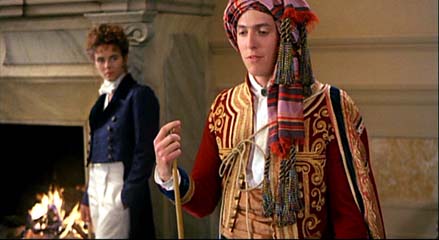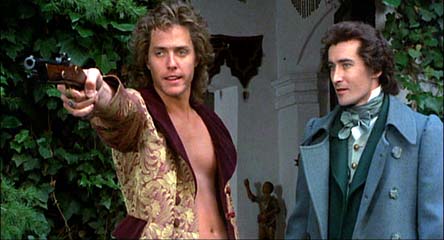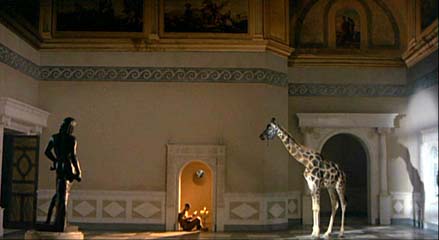|
Two thumbs so far down they scrape upon hell itself. Tuna's comments in white Rowing with the Wind (1988), aka Remando al viento, is a Spanish film that begins when Lord Byron, Mary Shelley and Percy Bysshe Shelley are all together in Geneva. They decide to invent a horror story apiece. Mary Shelley invents Frankenstein, but the monster takes physical form and haunts her, and the rest, causing tragedy after tragedy in their lives. Some reviewers claim that there is the germ of a good idea here which the film fails to live up to. I will take their word for it. I don't know enough about the lives of the characters involved to know what was based on fact and what was invention, but the entire thing was tedious, didn't really have a coherent plot, and the acting was nothing special. It did look spectacular. Some of the comments at IMDB mention that the US release was severely cut, which could account for some of the disjointedness. Scoop's comments in yellow: It's Elizabeth Hurley, back in her chubby, unibrow days! No review is really necessary, because a single phrase will tell you all you need to know: Hugh Grant as Lord Byron. I don't think you need Roger Friggin' Ebert to tell you that's gotta suck Slurpee out of the Super Big Gulp cup. If that doesn't scare you off, these two frames should do the trick: |
|
|
|
|




